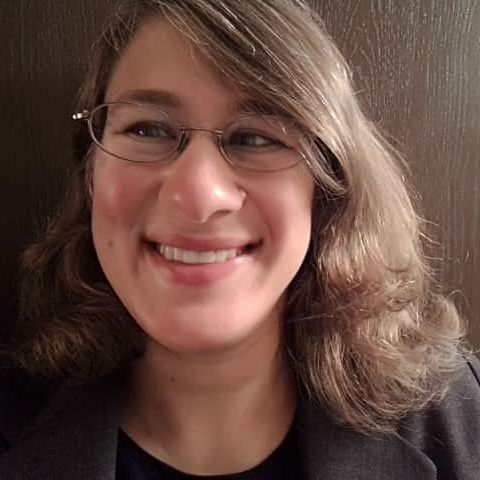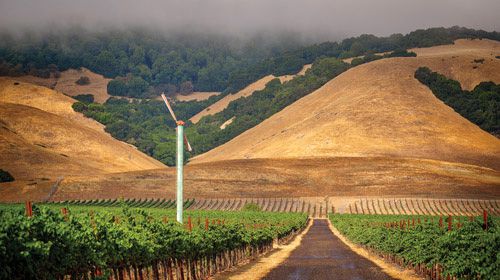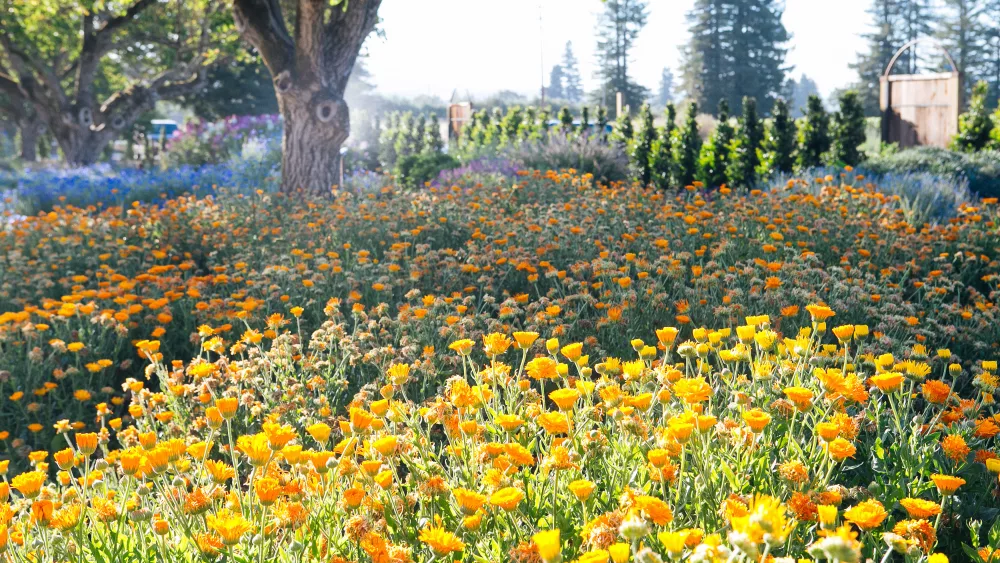
For the majority of North Bay wine grape growers, 2017 was a good year, with a wet spring that encouraged growth, summer hot spells that hastened ripening, and almost all grapes in the tanks before the firestorm. Quality was also ensured by growers’ cooperative efforts to power through the labor shortage.
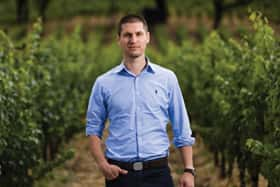 In Sonoma and Napa, some winemakers are comparing the flavor profile of vintage 2017 with wines from 2012, 2013 and 2015. Others say it’s too soon to predict specifics, particularly for reds, which can take up to two years to develop in the barrel. According to Matthew Crafton, winemaker at Chateau Montelena in Calistoga, white wines typically don’t require as much maturation time as reds, which benefit from a longer period in oak to achieve balance in flavor, texture and aroma.
In Sonoma and Napa, some winemakers are comparing the flavor profile of vintage 2017 with wines from 2012, 2013 and 2015. Others say it’s too soon to predict specifics, particularly for reds, which can take up to two years to develop in the barrel. According to Matthew Crafton, winemaker at Chateau Montelena in Calistoga, white wines typically don’t require as much maturation time as reds, which benefit from a longer period in oak to achieve balance in flavor, texture and aroma.
Many wineries did a crush with facilities where the power never went out, or were located far from the fires. They are fortunate to enjoy an uninterrupted fermentation process that has been free from smoke. As the North Bay endures another hot summer, television footage of the fires in Mendocino and Lake counties is a reminder to address concerns. Since October 2017, vintners and winemakers have put in a lot of work to explain why most of vintage 2017 will turn out well. One of their most effective tools is pouring the best past vintages that Napa and Sonoma have to offer.
In the fire’s path
A number of wineries that suffered losses in the 2017 fires are producing wine that smells and tastes good so far. Companies that experienced power outages, blocked roads, and forced shutdowns got help to pick, transport, and produce their signature wines.
 Igor Sill, vintner and winemaker at Sill Family Vineyards in the Atlas Peak AVA in Napa, lost his winery, equipment, and the aging 2016 Cabernet Sauvignon to the Atlas fire. Yet he said tastings from 2017 wines in the barrel have been excellent.
Igor Sill, vintner and winemaker at Sill Family Vineyards in the Atlas Peak AVA in Napa, lost his winery, equipment, and the aging 2016 Cabernet Sauvignon to the Atlas fire. Yet he said tastings from 2017 wines in the barrel have been excellent.
“The 2017 rainy season came as we anticipated. We were fully prepared for it and were able to cut and mulch our mustard greens, sweet peas and oats cover crops, providing natural organic nutrients to our soils. We experienced a beautiful bud break. There was some concern over frost in the high elevation vineyards, but none came. We didn’t experience any extraordinary heat wave, so all has been good. Atlas Peak’s higher elevation, native indigenous yeast and purity of air quality provided another superb season of vine growth. I have no knowledge of anyone with Pierce’s disease, which is carried in on high winds. With the exception of the fire, we experienced a brilliant, flawless vintage year at Atlas Peak,” says Sill.
Sill said he sees very little change between the 2015 Atlas Peak Estate très Cabernet Sauvignon, which won the double gold medal and USA Wine of the Year at the China Wine & Spirits Awards in 2018 and the winery’s 2017 Cabernet Sauvignon harvest.
“We were able to take advantage of the native wild yeast, which is indigenous to Atlas Peak. We’ve had six lab tests and there’s zero sign of any smoke taint. We didn’t lose any vines, just 27 ancient oaks and our winery due to the fires. Unfortunately, I also lost all my 2016 aging wines along with their exquisite new Taransaud white French oak barrels, but I was able to get replacement Taransaud’s for our 2017 vintage. I’m optimistic. You’ve got to play the hand you’re dealt and go with what the land gives you,” says Sill.
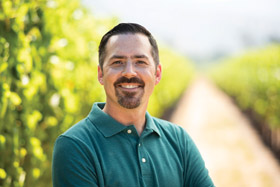 Chris Louton, winemaker at St. Francis Winery & Vineyards in the Sonoma Valley AVA in Santa Rosa, says the fire burning around different parts of the company’s properties affected the wine grapes dissimilarly. “We had a little bit of Cabernet Sauvignon and Merlot still on the vines. We left some fruit out and brought in others in areas we thought were okay. Yes, we had fires, but the (quality) of the whole vintage was not dictated by this event,” he says.
Chris Louton, winemaker at St. Francis Winery & Vineyards in the Sonoma Valley AVA in Santa Rosa, says the fire burning around different parts of the company’s properties affected the wine grapes dissimilarly. “We had a little bit of Cabernet Sauvignon and Merlot still on the vines. We left some fruit out and brought in others in areas we thought were okay. Yes, we had fires, but the (quality) of the whole vintage was not dictated by this event,” he says.
Louton says St. Francis is continuing to make wines while carefully monitoring quality. “For eight to 12 months, we’re watching what’s in the barrel,” he says. “Though the wines taste fine now, we need to be vigilant. Smoke taint is a sneaky thing. I’m confident in the wines of 2017 overall. The year itself went well.”
Louton says he thanks friends and industry contacts for having a vintage this past year.
“We had help. Luckily, we were also able to come to the winery a couple of times. This allowed us to turn on the lights and fans. I ended up making wine at five different wineries this past year. Now, I have a much broader appreciation of how the community comes together in times of crisis. It was a countywide affair,” said Louton.
Michael Honig, president of Honig Vineyard & Winery in the Rutherford AVA, says the fires reveal the story of two vintages. “You have the grapes harvested before the fire and the grapes harvested post-fire. We sold 20 percent of our crop as bulk wine. These were all of the grapes affected by the fire,” says Honig. “The 80 percent that remains is very similar to the vintages from the last five years. The 2017 fruit was bright and ripe and the vintage is looking exceptional.” says Honig.
"Explosive growth" in the spring
Wine grape growers agree that plentiful winter rain was one of the best aspects of the year.
“The vintage began with a full ground water profile, resulting in excellent spring growth. While some may compare 2017 to the more recent warm vintages, the intense periods of summer heat have yielded Cabernet with exquisite ripeness and density. For the Riesling and Chardonnay here at Montelena, the quality was outstanding, although quantities were low. The white wines in general are incredibly rich and flavorful,” says Crafton.
 Brittany Pederson, director of viticulture at Renteria Vineyard Management, LLC, based in Napa, says growers were happily surprised to see so much rain after having a number of years of drought. “It created a need for additional leafing and canopy management,” she says.
Brittany Pederson, director of viticulture at Renteria Vineyard Management, LLC, based in Napa, says growers were happily surprised to see so much rain after having a number of years of drought. “It created a need for additional leafing and canopy management,” she says.
David Lattin, winemaker at Emeritus Vineyards, says moisture resulted in a larger than normal crop. “We grow our own fruit and sell fruit to 15 other wineries. We cut off the irrigation in 2011 and have been dry farming ever since,” he says. “Each year the vines are responding differently. They’re looking healthier. As the roots drill deeper into the soil, they’re hitting their stride. I see 2017 as an incredible vintage. [The grapes have] great perfume, beautiful color, and tremendous acidity.”
Mike Sangiacomo, partner at Sangiacomo Family Vineyards, says his Chardonnay and Pinot Noir numbers were below average. Although there was rain, Sangiacomo describes bloom-time weather as cooler than normal.
Handling the heat
The summer of 2017 was hot, with three heat spikes before the Labor Day weekend. But that weekend was the telling point. The highs of 112 degrees in Healdsburg and 110 degrees in Santa Rosa rapidly accelerated ripening. Many growers had to harvest sooner than expected.
“We had some really high temperatures throughout the summer, especially over the Labor Day weekend. Many varieties [ripening] started to collide with each other. We harvested some of them by hand crews because the machines were so busy picking other vineyards. We were butting heads up against Chardonnay, Zinfandel and Pinot Noir. People worked days you don’t normally work, like Sunday and Labor Day. There was a lot of sharing [of labor],” says Louton.
Mary Lou Marek, co-owner of Antonina’s Vineyard, located in Fountaingrove in Santa Rosa, says the Labor Day weekend highs were “a blessing in disguise.”
“Most of the vineyards in Fountaingrove are at a pretty high elevation, and so are above the fog cover. The heat caused the ripening to accelerate. That’s why we had almost everything picked two weeks earlier than normal, before the fires. With few wineries located in the Fountaingrove area, the grapes went to custom crush facilities outside the fire zone, such as Sebastopol. In terms of grape production, the fires were not significant. The wines are tasting beautiful now,” says Marek.
According to Lattin, the heat spell barely affected his grapes. “But we picked at night for vineyard crews’ safety and better chemistry,” says Lattin. “The highest temperature at night was 60 degrees.”
 Kevin Barr, president of Redwood Empire Vineyard Management, based in Geyserville, says the heat spikes had no major effects on the grapes his crews picked. “If anything, [the heat spikes] helped move the ripening right along. We were able to foresee the temperature jumps and were prepared with irrigation ahead of time. Another issue during heat spikes is the safety of all of our crew members. There were many days where we had to shut down because the excessive heat was making for dangerous working conditions. This fed into our labor shortage as well,” says Barr.
Kevin Barr, president of Redwood Empire Vineyard Management, based in Geyserville, says the heat spikes had no major effects on the grapes his crews picked. “If anything, [the heat spikes] helped move the ripening right along. We were able to foresee the temperature jumps and were prepared with irrigation ahead of time. Another issue during heat spikes is the safety of all of our crew members. There were many days where we had to shut down because the excessive heat was making for dangerous working conditions. This fed into our labor shortage as well,” says Barr.
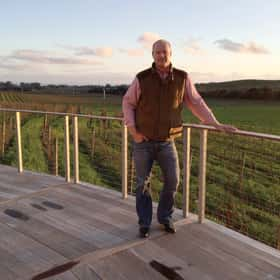 Kirk Venge, proprietor and winemaker of Croix Estate and Venge Vineyards, grows wine grapes in Sonoma and Napa counties. He has two wineries and several clients for which he grows and sources grapes. Since the Sonoma County grapes are primarily Pinot Noir and Zinfandel, in the Russian River and Sonoma Coast AVAs, they matured earlier than Napa grapes.
Kirk Venge, proprietor and winemaker of Croix Estate and Venge Vineyards, grows wine grapes in Sonoma and Napa counties. He has two wineries and several clients for which he grows and sources grapes. Since the Sonoma County grapes are primarily Pinot Noir and Zinfandel, in the Russian River and Sonoma Coast AVAs, they matured earlier than Napa grapes.
“In Sonoma County, the grapes did great. We had one of our best years ever for Pinot Noir, Chardonnay and Zinfandel. But over Labor Day, a few Cabernet Vineyards in Napa strangely locked up from the massively excessive five-day heatwave. The grapes simply weren’t ripening. They were just hanging changeless in a catatonic-like level of ripeness. Eventually a few of the affected vineyards started to move and mature again,” says Venge.
Honig says waiting was the key to dealing with the heat in Napa. His vineyards are in the middle of the valley and on the valley floor.
“We don’t pick based on sugar. We pick on flavor. You have to have patience. You have a couple of hot days and then it cools down. So the sugars went up. But then they went down with the cool mornings and cool nights. The sugar is just a number. We took our time and waited until the fruit was ripe. We have a very organized team. Our winemaker, Kristin Belair, has a process she’s been using for years, and it works,” says Honig.
Coping with the labor shortage
The labor shortage affected almost all the growers in the North Bay, especially because of sudden events necessitating immediate demand. Karissa Kruse, president of the Sonoma County Winegrowers, says more businesses are considering hiring H-2A temporary agricultural workers or are relying on a full-time labor force.
Lattin says Emeritus gets through the season by having a “large full-time crew of 14 to 16 people.”
Barr says he was able to “make it by” in 2017. “Labor was certainly short for the 2017 growing season,” he says. “We have had to learn how to constantly streamline our operations and how to be very efficient. It is the only thing that has got us through this labor shortage.”
Sangiacomo says a strategic use of mechanical leafing and machine harvesting helped his vineyard. “We were able to get everything done by hand that we wanted to. The mechanical leafer does a 50 percent job. We machine leafed the outer leaves and had our hand crews do the last 50 percent around the cluster. We’re trying to stretch our labor that way,” says Sangiacomo.
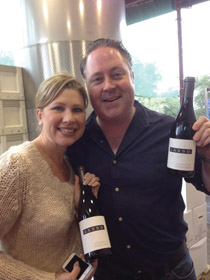 Sam Lando, owner of Lando Wines, a Sebastopol-based Pinot Noir producer, refers to the labor shortage as “rotten.” Lando uses fruit from 9 different vineyards to produce Pinot Noirs from the Russian River Valley and the Sonoma Coast AVAs.
Sam Lando, owner of Lando Wines, a Sebastopol-based Pinot Noir producer, refers to the labor shortage as “rotten.” Lando uses fruit from 9 different vineyards to produce Pinot Noirs from the Russian River Valley and the Sonoma Coast AVAs.
“We had to work around a couple of picks. It has not been ideal. It’s gotten constantly more challenging. We don’t machine harvest, though. Everything’s done by hand. Despite all that, the 2017 vintage wines are coming along well. I think it’s a hybrid of 2015, which was super-concentrated, deep and piercing, and 2014, which was aromatic and floral, with front palate, fruit forward character. We’re expecting a good harvest this year—an even growing season, bigger than average crop, good fruit, really luscious,” says Lando.
Venge says he thought the need for labor was worse in 2016. “We got a little sharper with predicting the pick date this year. There’s a lot of moving parts as to how a pick is perfected. Still, our contractors brought in labor from all over, including Lake County, Stockton, Woodland and Lodi,” says Venge.
The fires made the labor shortage worse, according to Pederson. “We have a few crews that live in Santa Rosa,” says Pederson. “Some workers were severely impacted because they lived in Coffey Park.”
Marketing vintage 2017
Wineries and vintners in the North Bay are engaged in an ongoing effort to educate the public about the effects of the 2017 fires. “The relationship between the Napa Valley Vintners and Visit Napa Valley during and after the wildfires was one of extraordinary collaboration and of immense value to our members, our community, the visiting public, and the media in regards to what was happening, almost hour by hour, and in the getting-back-to-business recovery phase,” says Cate Conniff, communications manager for the Napa Valley Vintners. “From many forums and conversations with Napa Valley winemakers, they are very excited about the quality of the wines from the 2017 vintage. [They] are describing them as opulent, velvety, concentrated, dense, and possessing layers and depth.”
Michael Haney, interim executive director of the Sonoma County Vintners, says the group was fortunate to have a close working relationship with Sonoma County Tourism and Sonoma County Winegrowers. “We have initiated quarterly meetings with the executive directors and their respective board presidents from each of the organizations, where we discuss the fires, response, and fire messaging,” says Haney. “The marketing teams of [the] organizations also meet on a regular basis to discuss the messaging around the 2017 vintage, to encourage visitors to the county and communicate that we are open for business.”
Most of the grapes in both counties were harvested before the fires, and despite the public concerns about smoke taint, it’s widely believed there is no smoke taint issue from last year’s harvest. Kruse says this year’s fires in Mendocino and Lake counties creates concerns for all involved. “The smoke swirling again creates a challenge and an opportunity to talk about what happened here,” she says. “We have focused our efforts on hosting media events and wine education to support the messaging both specific to the fires last year and broader about Sonoma County vineyards and sustainability.”
Kruse says bringing wines from past years in which there were North Bay fires helps eliminate concerns. “We are showcasing Cabernets from vintage 2008,” she says. “We’re pouring those wines 10 years later to demonstrate that they’re great.”
Growers in both counties agree that it is important to communicate that making wine from low-quality fruit is not worth the risk. “We didn’t want to destroy our 35-year reputation because of one vintage,” says Honig. “This is not something we could fix or mask.”
Crafton encourages everyone—trade, chefs, collectors, and, of course, consumers—to taste the 2017 vintage. “It’s important to keep things in perspective—90 percent of the crop was not affected by the late season fires,” says Crafton. “Moreover, many of the wines from the vintage are already available, or will be soon, so try it for yourself. Quite a few white wines have been released, and they are delicious.”


